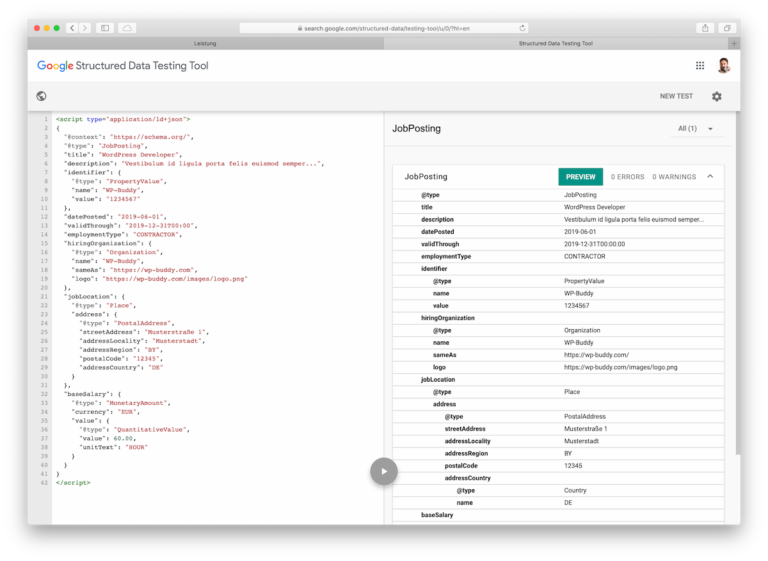
That moves us into search engine behavior, and there’s no rule that all search engines have to behave the same way.
#STRUCTURED DATA GENERATOR GOOGLE HOW TO#
Structured data communicates to the search engine how to show the page (or rather, it suggests it). Between the spring and fall of 2019, added four new rich result options, five Google Search Console Enhancement reports and seven vocabulary releases.īut the language, or code, dictates how the web page (not the search engine) functions. And each one has 20+ properties to define them. In fact, there are over 800 different definitions (or “classes”) within the framework of.

is a universally supported and consistent language across all search engines. Some websites use markup for product reviews or physical locations. It’s worth mentioning that technically isn’t the only SEO-fluent markup vocabulary in town. But in the context of your SEO strategy, structured data refers to one thing: markup. If you use the high-level definition, there are as many types of structured data as there are systems of organizing and quickly identifying information. Schema markup ensures that what appears in the SERPs is more useful, more tailored to the user’s needs and more capable of communicating information quickly. And where the metadata makes those blue links possible, structured data in the form of schema markup kicks them up a notch. What do we see on our end? A blue link in the SERPs. Then, just like a card catalog, search engines file all of those web pages so people can access them. Web pages are semi-structured: unstructured content with metadata to help the search engines understand it better. A book with a title and author? Semi-structured data.
#STRUCTURED DATA GENERATOR GOOGLE OFFLINE#
Moving way offline now: a book on your bookshelf with no words on its spine? Unstructured. Pictures tagged with the date and time? Semi-structured data. Pictures in your photo library by themselves? Unstructured. A Word document with the document properties updated so you can view the author and date created when you right-click the file? Semi-structured data. This is true for offline information, too.Ī Word document by itself? Unstructured. But combine that unstructured information with a way to organize or find it - metadata on web pages, attributes on links - and the end product is semi-structured data. Most of what we produce on the web is, by itself, unstructured. This is data that doesn’t have a rigid structure, but instead relies on using tags, attributes and metadata to quickly communicate information, like HTML. Semi-structured data is, a cross between structured and unstructured.

But on their own, they’re unstructured).ĭo you dump all of your tasks into a backlog and build priority tasks into your weekly workflow? If so, you’re familiar with moving from unstructured to structured data. (There are forms of schema markup you can use to help search engines learn about these different assets.

If structured data is organized information, unstructured data is everything else: PDFs, images, videos, files, presentations, etc. But what’s the difference between structured, unstructured, and semi structured data? Structured data vs. At its core, it’s simply organized information. If you use a search engine like Bing, you’ll find a similar result.īefore we get into, let’s stay with the high-level structured data definition to explore its properties. If you search “bookstores in oklahoma city,” you’ll see a result like the one below: But schema also has much broader use cases that are incredibly useful to your customers. In this instance, a structured query language (SQL) is used to interact with linked data in the table. One example of structured data is a relational database such as a table. The site contains a standardardized list of markup that the major search engines - Google, Bing, Yahoo and Yandex - have collectively agreed to support. Within the world of SEO, structured data is the markup that helps search engines understand how to interpret and display the content.

Structured data is any data that lives in a fixed field within a file.


 0 kommentar(er)
0 kommentar(er)
